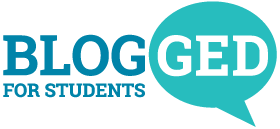
When preparing for your GED, it’s essential to understand that everyone learns differently. Tailoring your study techniques to match your learning style can make a significant difference in how quickly and effectively you absorb new information. Let’s explore the seven learning styles and practical tips for each to help you succeed on your GED journey.
1. Interpersonal (Social) Learning Style
If you enjoy being in group settings and enjoy discussing ideas with others, you’re likely an interpersonal learner. You understand and retain information better when you engage with people around you, whether through conversation or group activities.
Study Tips:
- Study with a group: Join a study group or attend GED classes to discuss key topics with peers.
- Explain to others: Break down complex ideas by explaining them to a teacher, friend, or family member.
- Review aloud: After taking notes or reading, go over them with others to reinforce your understanding.
Best tools for you:
GED Live™ — live online classes where you can interact and engage with Kaplan teachers and classmates
GED+™ — your all-in-one solution with a personal GED advisor, study tools, practice tests, and retakes until you pass
2. Intrapersonal (Solitary) Learning Style
Do you prefer working alone and focusing without distractions? Intrapersonal learners are self-motivated and benefit from reflecting deeply on what they learn.
Study Tips:
- Find a quiet spot: Choose a space where you can focus without interruption.
- Set personal goals: Plan your study sessions and set clear learning objectives.
- Keep a journal: Record your thoughts and reflections on what you learn, making personal connections to the material.
- Seek help when needed: Don’t be afraid to write down questions and seek help from a teacher or online resource.
Best tools for you:
GED Flash™ — thousands of interactive practice questions to keep your skills sharp
GED+™ — your all-in-one solution with a personal GED advisor, study tools, practice tests, and retakes until you pass
Textbooks — with dozens of books to choose from, you can settle into a quiet place to learn concepts independently
3. Kinesthetic (Physical) Learning Style
Kinesthetic learners absorb information best through hands-on activities. You enjoy learning by doing and using physical movement to grasp new concepts.
Study Tips:
- Get hands-on: Use flashcards, workbooks, or physical activities like role-playing to engage with the material.
- Focus with action: Try using breathing exercises or light movement before studying to help focus.
- Role-play key ideas: Explore concepts by acting them out either alone or with others.
Best tools for you:
GED Flash™ — thousands of interactive practice questions to keep your skills sharp
GED+™ — your all-in-one solution with a personal GED advisor, study tools, practice tests, and retakes until you pass
Scoreboost workbooks — Learn by physically working through key concepts and problems from start to finish
4. Auditory (Musical) Learning Style
If you remember things better through sound, rhythm, and music, you’re an auditory learner. You prefer hearing concepts explained and often use sound to enhance memory retention.
Study Tips:
- Participate in discussions: Engage in group talks about key topics and repeat what you learn aloud to reinforce memory.
- Associate music with learning: Study with background music that helps you concentrate or use rhymes and songs to memorize rules and concepts.
- Listen and learn: Use video or audio lessons where you can hear a teacher explain topics.
Best tools for you:
GED Flash™ — thousands of interactive practice questions to keep your skills sharp
GED+™ — your all-in-one solution with a personal GED advisor, study tools, practice tests, and retakes until you pass
GED Live™ — live online classes where you can interact and engage with Kaplan teachers and classmates
5. Visual (Spatial) Learning Style
Visual learners process information best when they can see it in pictures, diagrams, or charts. If this is your style, you’ll benefit from using visual aids while studying.
Study Tips:
- Use visuals: Look for study materials that include images, graphs, and charts to help you visualize the information.
- Color-code notes: Highlight or color-code important points in your notes to create visual connections between concepts.
- Whiteboard it: Use a whiteboard or sticky notes to jot down key ideas, making them visible and easier to recall.
Best tools for you:
GED Flash™ — thousands of interactive practice questions to keep your skills sharp
GED+™ — your all-in-one solution with a personal GED advisor, study tools, practice tests, and retakes until you pass
GED Live™ — live online classes where you can interact and engage with Kaplan teachers and classmates
6. Verbal (Linguistic) Learning Style
Verbal learners use words—spoken or written—to understand and retain information. You enjoy reading, writing, and explaining concepts to solidify your learning.
Study Tips:
- Speak it out: Explain concepts out loud to yourself or to a study partner.
- Write it down: Use workbooks, journals, or notes to reinforce learning. Writing helps solidify new information.
- Memorize with rhymes: Use mnemonic devices or rhymes to help remember tricky rules, like “I before E, except after C.”
Best tools for you:
GED+™ — your all-in-one solution with a personal GED advisor, study tools, practice tests, and retakes until you pass
GED Live™ — live online classes where you can interact and engage with Kaplan teachers and classmates
Scoreboost workbooks — Learn by physically working through key concepts and problems from start to finish
7. Logical (Mathematical) Learning Style
If you’re a logical learner, you prefer systems, structure, and reasoning. You enjoy finding patterns and making connections between concepts.
Study Tips:
- Make a plan: Use to-do lists or schedules to organize what you need to study and when.
- Be consistent: Stick to a regular study schedule and repeat methods that work well for you.
- Summarize and connect: Create lists or diagrams that show the connections between ideas to better understand and remember them.
Best tools for you:
GED Flash™ — thousands of interactive practice questions to keep your skills sharp
GED+™ — your all-in-one solution with a personal GED advisor, study tools, practice tests, and retakes until you pass
GED Live™ — live online classes where you can interact and engage with Kaplan teachers and classmates


